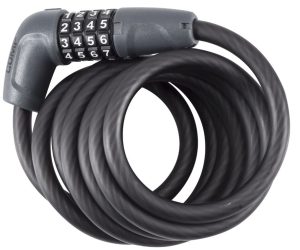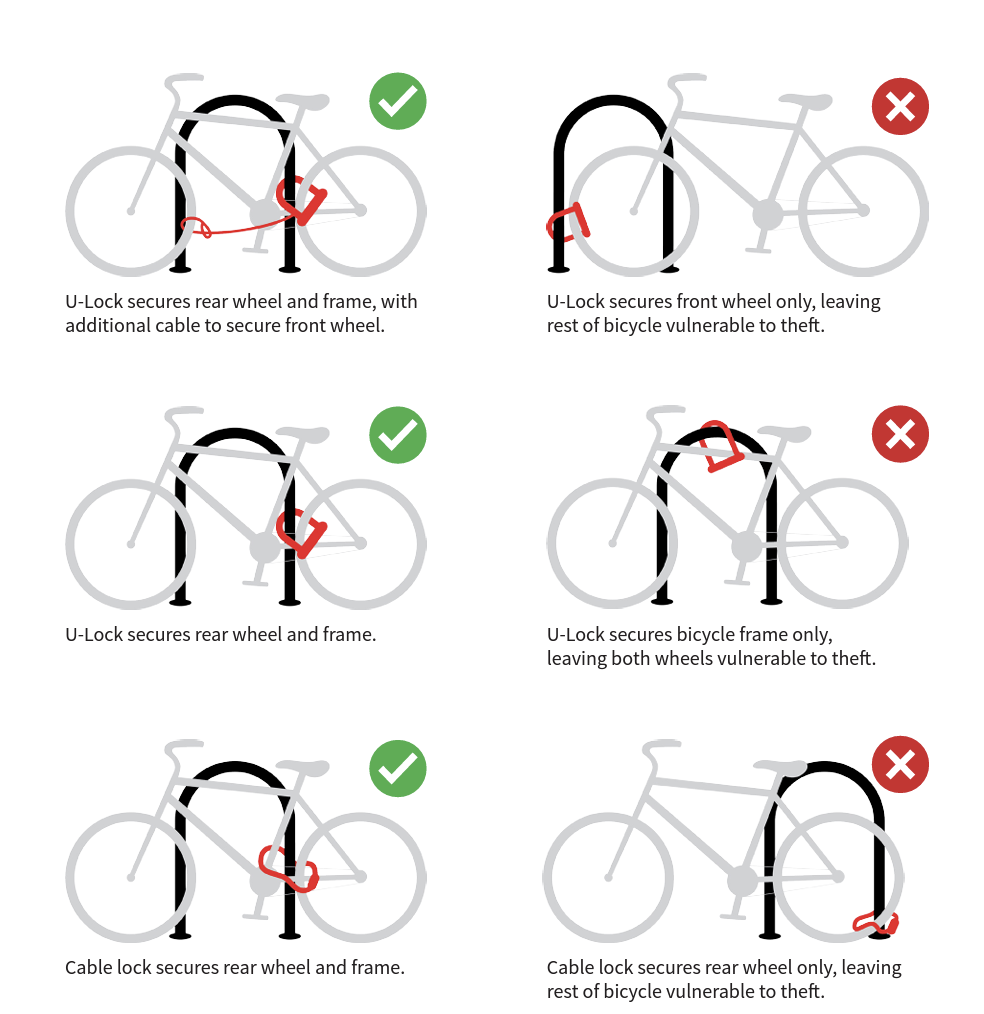Whether you’re a casual cyclist or a student who’d rather bike to class instead of sitting in the “great American school drop-off line,” you’ll need to properly secure your bicycle when parking in public. This article provides a quick overview of the different types of bike locks, how to use them, and other tips for keeping your bike safe.
Lock Types
The two most common types of bike locks are the U-lock and the cable lock (pictured below).

U-Lock (Source: masterlock.com)

Cable Lock (Source: trekbikes.com)
U-locks are sturdier and harder to break than cable locks, making them the safer option for securing a bike. However, U-locks can be heavy and usually require a separate key, which could be misplaced. U-locks are also less flexible than cable locks, meaning they might not fit when parking in a crowded – or improperly placed – bike rack.
Cable locks, on the other hand, are flexible and usually use a combination lock rather than a separate key. For this reason, cable locks are a popular choice for children who are likely to be parking their bikes on crowded school bike racks and don’t want to keep track of a separate set of keys. However, cable locks are less sturdy than U-locks and, with the right set of tools, someone can cut through them in a matter of seconds.
With benefits and drawbacks to each style, choosing the right lock is a personal choice and there is no “correct” decision.
How to Lock Your Bike
Regardless of which lock you purchase, it’s important to follow proper locking techniques. To do this, loop your lock through the frame of the bike and at least one wheel – preferably the rear wheel – before securing the lock to the rack. Make sure to bring any loose items, such as helmets or water bottles, with you when you leave. These might get stolen if you leave them unattended. Also, be careful not to accidentally loop your lock through an adjacent bike or lock. This may seem obvious, but mistakes happen, nonetheless. See the images below for guidance on proper and improper locking techniques.
Not All Bike Racks are Created Equal
Hopefully, your destination has a properly sited bike rack with adequate capacity, in a highly visible area. However, not all parking infrastructure is the same and you’ll want to do a quick scan of the area to find the best spot.
Always try to find a dedicated bike rack instead of locking your bike to a tree or a fence. Also, whenever possible, leave your bike in a highly visible area where people are less likely to tamper with it. Sheltered parking is also preferred, to keep your bike dry in the event of rain.
Finally, when you return to your bike, do a quick inspection to make sure everything’s as you left it. In fact, a quick “ABC check” (Air pressure, Brakes, and Chain) is a good habit to develop anytime you’re preparing to ride your bike, regardless of where it’s been parked.

Source: The School Bike Parking Guide prepared by the Safe Routes to School Resource Center at Rutgers University
For towns and school districts looking for more information on providing appropriate bicycle parking, see the New Jersey Safe Routes Resource Center’s School Bicycle Parking Guide.
Be sure to check out the Safe Routes Resource Center’s Safety Snippet video on how to lock your bike.
